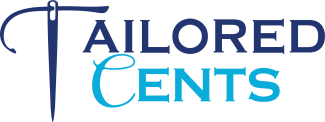
Your Guide to Different Retirement Accounts: Achieving Tax Diversification
For many, retirement planning is the financial equivalent of how toddlers view eating their vegetables. You know it’s good for you, but it’s not exactly what you’d call a thrilling activity– unless, of course, you’re a financial planner.
Our enthusiasm for retirement planning is baked into our personal definitions of retirement.
Do we view retirement as a finish line we’ll breathlessly cross one day and hope for the best?
Or do we view it as an exciting new chapter filled with world travel, spending time with our families, and taking up our side passions with world-class tutors?
Surely, neither vision includes financial worries, tax complications, or government-imposed requirements on when and how we access our money.
The more specific you can get with the lifestyle you want after retirement, the clearer the outcomes of your retirement planning today become.
This guide isn’t just about a list of retirement accounts but an introduction to tax diversification.
Some retirement accounts are funded with pre-tax money and are tax-deferred, and others are funded with after-tax money and are tax-free.
Either way, Uncle Sam gets his cut– but the when can make an enormous difference.
Our current tax rates already raise eyebrows– imagine paying 37% on every dollar you earn in the highest tax bracket!
The real stinger is that today’s rates are some of the lowest they’ve ever been.
The modern tax bracket system began in 1913 with the 16th Amendment. From the 1940s to the early 1960s, top tax rates were above 90%, peaking at 94% in 1944.
Rates have generally declined since 1964; from 1987 onwards, the top rate fluctuated between 30% and 40%.
However, looking at the National Debt Calculator closing in on $37 trillion in debt, it wouldn’t be a stretch to imagine the government imposing higher taxes to make up the deficit at some point in our lifetime.
In this guide, we’ll explain how the different types of retirement accounts benefit you and how they could fit into your overall financial strategy.
| Account Type | Contribution Type | Growth Type |
|---|---|---|
| Traditional IRA | Pre-tax | Tax-deferred |
| Roth IRA | After-tax | Tax-free |
| 401(k) Plan | Pre-tax | Tax-deferred |
| Roth 401(k) | After-tax | Tax-free |
| SEP IRA | Pre-tax | Tax-deferred |
| SIMPLE IRA | Pre-tax | Tax-deferred |
| Solo 401(k) | Pre-tax or After-tax | Tax-deferred or Tax-free |
1. Traditional IRA (Individual Retirement Account)
The skinny: Pre-tax dollars, tax-deferred growth
The Traditional IRA is the most popular retirement savings account.
You contribute pre-tax dollars, which reduces your taxable income for the year, and your investments grow tax-free until you withdraw them during retirement.
Pros:
- Your contributions may be tax-deductible, lowering your current taxable income.
- Your money grows without being taxed until withdrawal.
- Wide range of investment options, including stocks, bonds, and mutual funds.
Considerations:
- The contribution limit for 2024 is $7,000 ($8,000 if you're 50 or older).
- Mandatory withdrawals—Required Minimum Distributions (RMDs)—start at age 73 and are taxed as ordinary income.
- Withdrawals before age 59½ may incur a 10% penalty plus taxes.
This type of account is best for someone who believes their taxes will be lower when they retire. On one hand, you won’t have a salary when you retire, and your federal income tax bracket will be lower. However, federal tax rates may increase by the time you retire.
2. Roth IRA
The skinny: After-tax dollars, tax-free growth
A Roth IRA allows you to contribute after-tax dollars, with the benefit of tax-free growth and withdrawals in retirement.
Pros:
- Qualified withdrawals are tax-free.
- No RMDs, allowing your investments to grow longer.
- Contributions can be withdrawn at any time without penalty.
Considerations:
- The contribution limit for 2024 is $7,000 ($8,000 if you're 50 or older).
- Income limits apply (starting at $138,000 for single filers and $218,000 for married filing jointly in 2024).
- Contributions are made with after-tax dollars, offering no immediate tax benefit.
This type of account is best for someone who expects to be in a higher tax bracket during retirement or wants tax diversification.
On one hand, federal taxes may be higher when you retire, but you can increase your tax-free nest egg.
However, you don’t receive a tax deduction this year, and that money could be used for something that offers a more immediate benefit to your life.
3. 401(k) Plan
The skinny: Pre-tax dollars, tax-deferred growth, employer match
A 401(k) is an employer-sponsored retirement plan that allows you to save for retirement through payroll deductions.
Contributions are made pre-tax, reducing your taxable income, and investments grow tax-deferred.
Pros:
- Many employers offer matching contributions– which is basically free money.
- High contribution limits ($23,000 for 2024, $30,500 if 50 or older).
- Some plans allow you to borrow against your balance.
- Potential to do a “Mega Backdoor Roth” through your 401(k)
Considerations:
- Limited to investment options offered by the plan.
- RMDs start at age 73.
- Withdrawals before age 59½ may incur a 10% penalty plus taxes.
This type of account is best for salaried employees looking to maximize their retirement savings with the benefit of employer-matching contributions.
On one hand, it’s an easy decision if your company offers an employer match. On the other hand, taxes may be higher when you retire (the same threat faced by all tax-deferred plans).
4. Roth 401(k)
The skinny: After-tax dollars, tax-free growth, employer match
A Roth 401(k) combines the features of a Roth IRA and a traditional 401(k).
Your contributions are already taxed (after tax), and qualified withdrawals are tax-free.
Pros:
- Employers can match contributions, though the match is typically placed in a traditional 401(k).
- Tax-free qualified withdrawals.
- High contribution limits ($23,000 for 2024, $30,500 if 50 or older).
Considerations:
- RMDs start at age 73, but this can be avoided by rolling over to a Roth IRA.
- Contributions are made with after-tax dollars, offering no immediate tax benefit.
Best for those who expect to be in a higher tax bracket during retirement or want tax diversification.
Federal taxes may be higher when you retire, so having a tax-free nest egg can be a smart move.
However, remember that you won't get a tax deduction this year.
5. SEP IRA (Simplified Employee Pension)
The skinny: Employer-funded, high contribution limits. Contributions are made with pre-tax dollars, and contributions are tax-deductible for the employer.
A SEP IRA is designed for self-employed individuals and small business owners. The employer makes contributions and is tax-deductible.
Pros:
- High contribution limits (up to 25% of compensation or $69,000 for 2024).
- Investments grow tax-deferred until withdrawal.
- Easy to set up and maintain.
Considerations:
- Only the employer can contribute.
- RMDs start at age 73.
- Withdrawals before age 59½ may incur a 10% penalty plus taxes.
This plan best suits self-employed professionals or small business owners seeking a high-contribution retirement plan.
6. SIMPLE IRA (Savings Incentive Match Plan for Employees)
The skinny: Employer and employee contributions, simple setup
A SIMPLE IRA is a retirement plan for small businesses with up to 100 employees. Both employers and employees can contribute.
Pros:
- Employers must match employee contributions up to 3% of compensation or contribute a fixed 2% compensation for all eligible employees.
- Investments grow tax-deferred.
- Employee contributions up to $16,000 for 2024 ($19,500 if 50 or older).
Considerations:
- Lower contribution limits compared to 401(k) plans.
- RMDs start at age 73.
- Withdrawals before age 59½ may incur a 10% penalty plus taxes, which is increased to 25% if they are within the first two years of participation.
This plan is often chosen by small business owners who want to offer their employees a straightforward retirement plan.
7. Solo 401(k)
The skinny: High contribution limits, flexibility, self-employed
A Solo 401(k) is a retirement plan designed for self-employed individuals with no employees except possibly a spouse. It offers high contribution limits and flexibility.
Pros:
- High contribution limits (up to $69,000 for 2024, plus an additional $7,500 catch-up contribution if 50 or older).
- Contributions can be pre-tax or after-tax (Roth), providing flexibility in tax planning.
- You can borrow up to 50% of your account balance, up to $50,000.
Considerations:
- More complex to set up and maintain than SEP IRAs or SIMPLE IRAs.
- RMDs start at age 73.
- Withdrawals before age 59½ may incur a 10% penalty plus taxes unless an exception applies.
Self-employed professionals often choose this plan without employees who want a high-contribution, flexible retirement plan.
The Gist of Tax Diversification
Predicting future tax rates for a long term retirement is like trying to forecast the next decade’s fashion trends; while we may have grown up with tax rates as low as flip-flops, they may be as high as stilettos when we cash in our last paycheck.
Or they might stay the same. Instead of planning with a crystal ball, tax diversification aims to guarantee a happy and fruitful financial picture upon retirement.
Either way, many indicators like staggering national debt, rising inflation, and a growing movement to increase taxes for the higher tax brackets point to tax rates growing significantly for high-earners.
By diversifying—mixing pre-tax and after-tax accounts—you gain the flexibility to tap into different tax buckets at different times, as well as front-loading a portion of your taxes at today’s rates just in case.
Remember, it’s not only about how much you make; it's about how much you keep.
Making Cents of Retirement Accounts
And there you have it– a few critical pieces of the roadmap to a well-financed future.
By mastering the art of tax diversification, you’ll set yourself up to not be overly impacted and possibly even dodge hefty tax hits. Choosing the right blend of retirement accounts is a critical step in establishing a nest egg to be excited about– future you will thank present you for the few extra hours you spend per year staying on top of things.
Two of the biggest retirement planning mistakes include waiting to save for retirement and failing to maximize your retirement contributions.
Whether you choose a Traditional IRA, Roth IRA, 401(k) plan, or any of the other options, being aware of their unique benefits and considerations and recognizing the differences between tax-deferred and tax-free growth is a game changer.
Ultimately, the best retirement account for you will depend on your current financial situation, future tax expectations, and retirement goals. For example, if you anticipate an “early retirement” and want to withdraw from your funds, it makes sense to build some wiggle room in your account structure– there are ways to access your retirement funds early, albeit with more complicated hoops to jump through.
And remember, the more specific we can be with our vision for retirement, the more detailed our planning today will be. Put some thought into the kind of life you see yourself wanting upon retirement, however far away that might be, and see how retirement planning is simply the delicate architecture to get you there.
